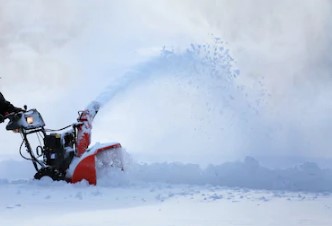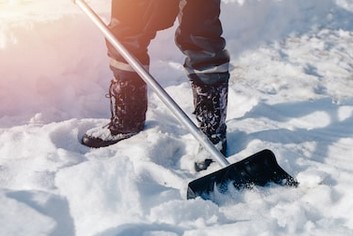What makes a good snow blower?
Before you buy a snow blower or snow thrower, you need to consider a few things to be happy with your new gardening tool afterward. Check out this company that reviews snow blowers.
The performance

An important part of the selection criteria should, of course, be performed. Depending on the version, the performance can vary considerably. Especially for longer distances, the power of the engine should be sufficient to be able to clear quickly. Which device has how much power is described in more detail below. The optimal device not only saves time but also nerves.
The noise level
Especially in heavily populated residential areas and/or a noise-sensitive neighbor, the volume can also play a certain role to prevent annoyance with other residents. Electric and battery-powered snow blowers are very quiet and can even be operated in the morning. Because the engine of petrol snow blowers is often exposed, these devices have a certain noise level.
The application possibilities
In order to work effectively with the device, it should also be suitable for mobile and versatile use. While a conventional and maneuverable snow shovel can also be used on narrow sidewalks, the snow blower quickly reaches its limits here. Clumsy and relatively immobile models not only require more time but also create stress for the buyer, especially in uncomfortable weather conditions. An important purchase criterion should therefore also be mobility and good maneuverability.
Usability
Good and simple operability is of course also an advantage. While a simple snow shovel is almost self-explanatory, the more extensive snow blower should be ergonomically designed. For example, to avoid overloading shoulders and arms, the handles should be user-friendly and the controls easy to reach. Make sure that the handlebar is height-adjustable and thus adjustable to your body size. A coat of arms provides better grip and better maneuverability of the snow blower.
An electric starter facilitates smooth starting, especially on very cold days. Some models also have a handle heater, which can also be very useful in bad weather.
Accessories
In contrast to a snow shovel, a snow blower can be equipped with useful accessories. If you pay attention to what is already included in the delivery at the time of purchase, you can save yourself the time-consuming and costly subsequent purchase. A useful detail in bad weather, for example, is a cover that prevents the device from freezing during storage, thus guaranteeing immediate start and smooth operation. But even if the pitch is in a shelter protected from the weather, a suitable cover can prevent contamination by dust or other dirt particles.
Often already integrated, but sometimes also available as accessories are headlights. Especially in the dark morning hours of the winter months, these are irreplaceable. In the best case, select an LED light that is both bright and energy-efficient.
The different drive types
Snow blowers can be divided into three drive types, each of which has certain advantages and disadvantages. The type of drive can also be decisive for the performance of the device, making them more or less suitable for private use. It is therefore important for the purchase decision to have full knowledge of the respective properties.
Advantages of petrol snow blowers
- The petrol-powered snow blowers usually have a higher output and can, therefore, clear away larger areas of snow or deeper snow at the same time. Even snow heights of up to 50 cm are no problem for these models.
- The centrifugal force and throwing distance are quite considerable and usually exceeds that of the other models.
- It can be used anywhere since no power supply is required.
- There is no danger from a power cable lying around.
- Due to the wheel drive, no force consuming pushing is necessary
Disadvantages of petrol snow blowers
- The powerful devices are somewhat more cost-intensive in the purchase.
- The purchase of additional fuel must be secured.
- Gasoline snow blowers are heavier and not so maneuverable.
- The models are a little louder in proportion.
Tips on Snow Clearing
Muddy snow and mirror-smooth surfaces on roads and paths endanger motorists and pedestrians alike in winter. To clear your property of ice and snow, you can choose between two basic methods: either with muscle power or with motorised equipment.
This depends on the amount of snow and the size of the area to be cleared. For example, a snow shovel or snow tub is usually sufficient, but if you live in an area with a lot of snow and have to cover a large area, it is worth purchasing a snow blower.
Clearing snow is a must

But no matter which clearing device you use: If you are the owner of a property, you must take precautions to ensure that your property does not pose a danger to others. This means that you are obligated to winter road clearance in the event of snowfall and icy conditions: You must clear snow from the entrances to your house and, in most cases, from the sidewalks leading past your property. The sidewalk must remain passable over a width of 1.50 m. The sidewalks must be accessible over a width of 1.50 m. Most municipalities have laid down this regulation for winter road clearance (in this or a similar way) in their municipal regulations or the street cleaning statutes. It is worth taking a look at the legal text of your place of residence if you want to carry out winter road clearance services carefully. In the event of accidents, you will otherwise quickly find yourself partly to blame.
Snow clearing: 5 tips on how to make things easier
In order to make the work of clearing snow easier, you should follow the tips in our instructions. The correct posture is essential when snow shovelling. In order to prevent back pain or even injuries, you should observe the following points when working on the snow shovel:
- Loose snow can be pushed away without pressure with a snow shovel. Always work diagonally to the joint if the sidewalk slabs are offset too much!
- The handle end of the snow shovel should be at hip height.
- Place your hands at a distance – the leverage effect can be used optimally and you save power when clearing snow.
- Take a lunge step and go to your knees easily. The movement of the shovel must come out of the legs.
- If you shovel the snow away to the side, you should not only turn your upper body, but your whole body. Always make sure you have a straight back.
Dull materials such as sand, chippings and granules have proven to be effective as scattering material. Salt, on the other hand, attacks the brickwork and disturbs the water balance of the plants – in many communities the use is therefore prohibited.
Snow clearing in the garden
Also for garden owners there is a lot to do in case of snowfall. Few snowflakes a day that only “sugar” the soil gently are no problem. Usually the powder snow thaws during the day and seeps into the ground. If the consistency of the snow is light and powdery, it may remain in the garden. If, for example, it is or becomes wet and heavy due to thaw, this can have a negative effect: Bamboo and evergreen shrubs such as boxwood and cherry laurel can break apart under the weight. Endangered are above all evergreen plants (because the snow finds more hold there) and grafted plants (roses, fruit trees, …). Therefore one should sweep the snow with shovel or broom from the plant or shake carefully from the branches.
When you step on the lawn, the snow thickens, which leads to an air seal. The possible typhula rot, also known as snow mould, has a negative effect on the next garden season. The reasons for the infestation are the relatively constant temperatures and the high humidity under the solid snow cover. Even without snow you should not enter the lawn during permafrost – the stalks bend and the lawn is weakened.
The question remains: Where to put all the snow after clearing the sidewalks? Do not create them at the edge of the sidewalk from the property to the street, however, on beds or green areas. This is because road salt (if allowed in your municipality) can cause damage to the lawn as soon as the snow thaws. Snow from garden paths simply piles up along the wayside – in thaw, precipitation seeps into the ground. However, do not pile up snow on beds or lawns!